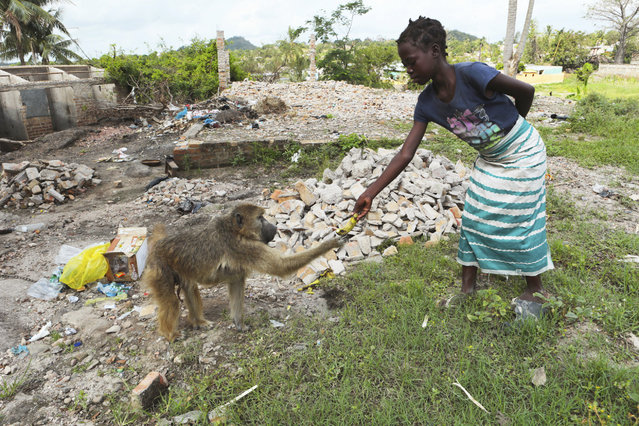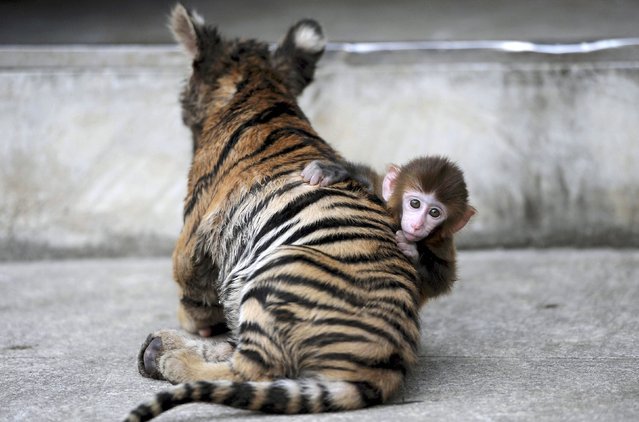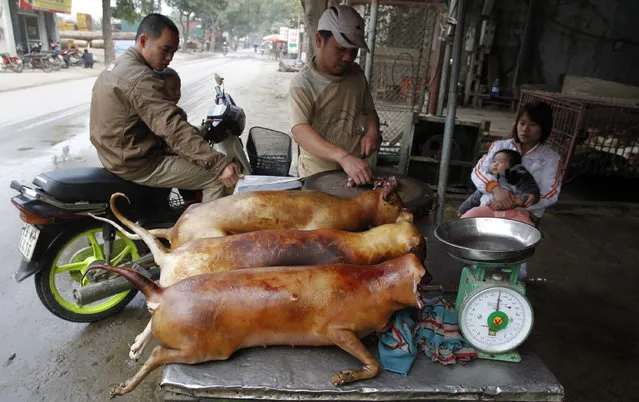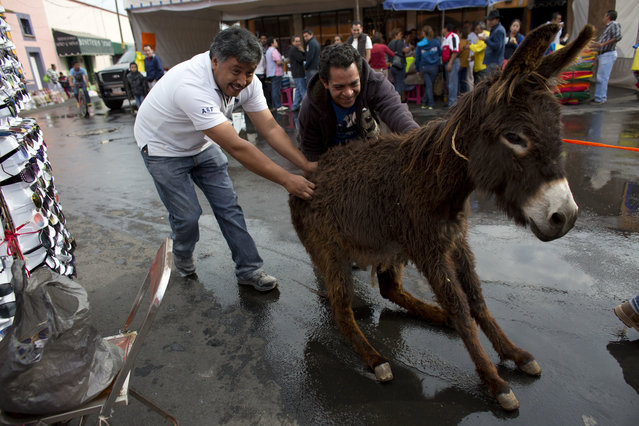
A young girl gives a banana to a tamed baboon on the outskirts of Beira, Mozambique, Sunday, March, 31, 2019. Cholera cases among cyclone survivors in Mozambique have jumped to 271, authorities said. So far no cholera deaths have been confirmed. (Photo by Tsvangirayi Mukwazhi/AP Photo)
07 Apr 2019 00:03:00,post received
0 comments







